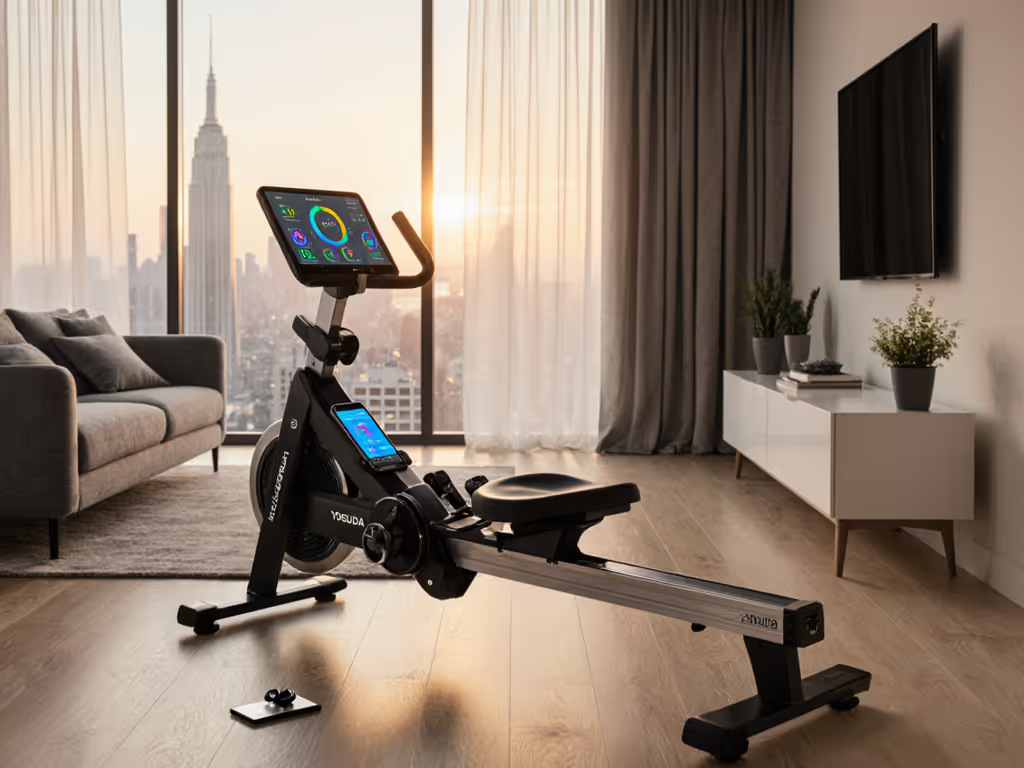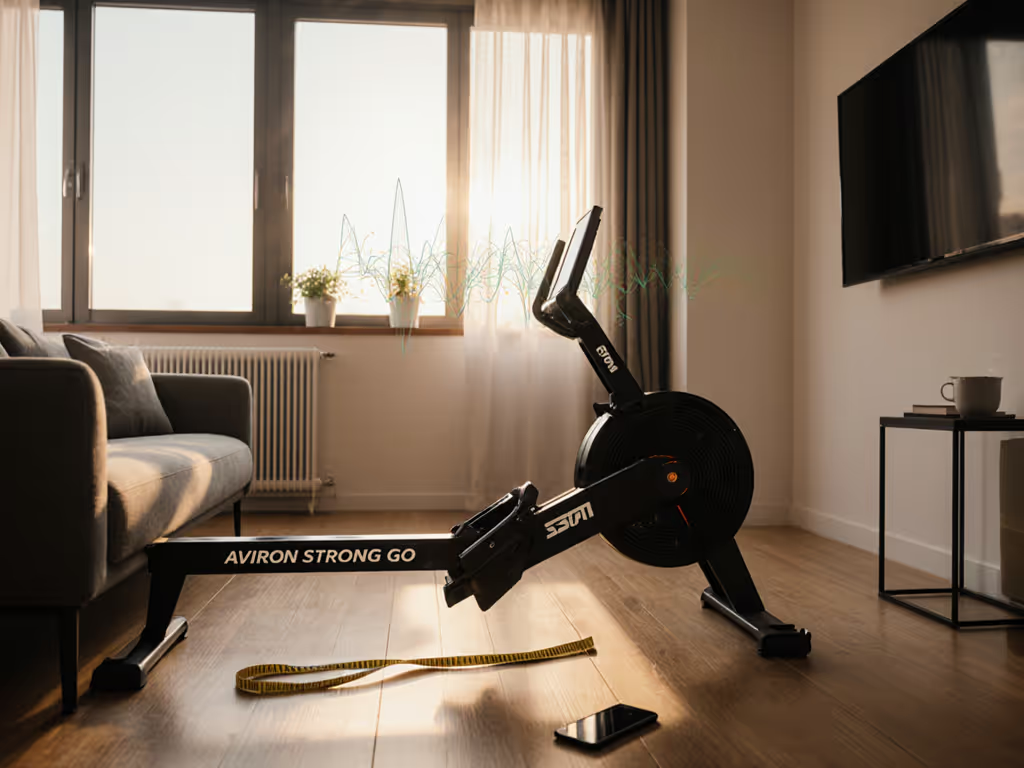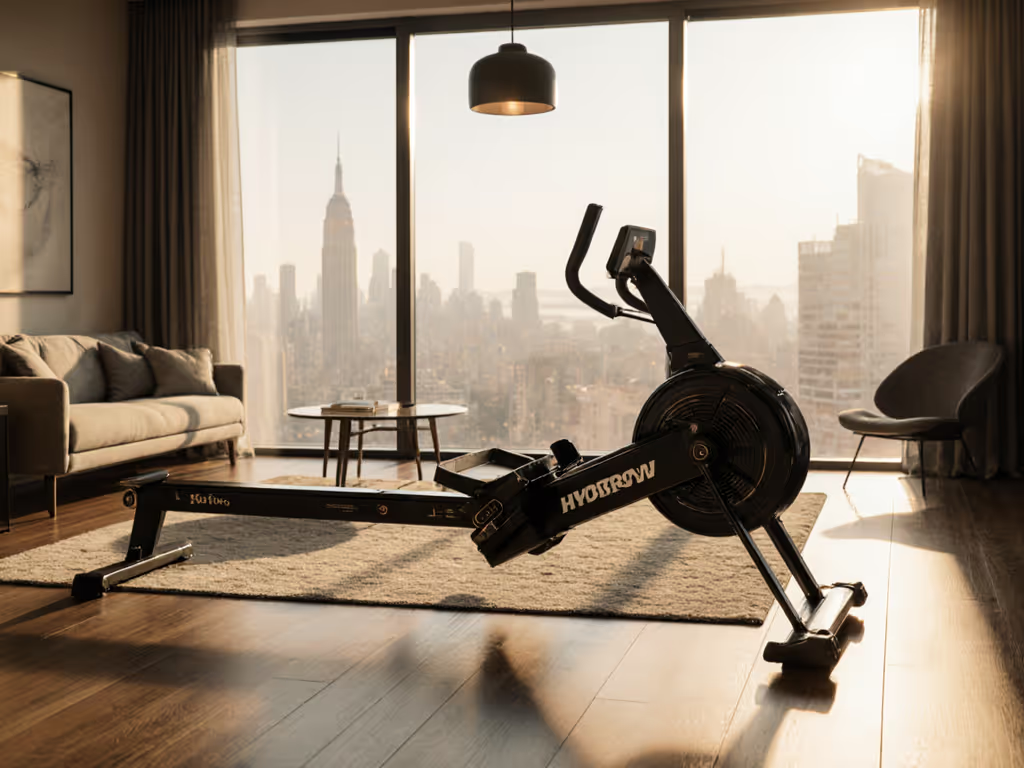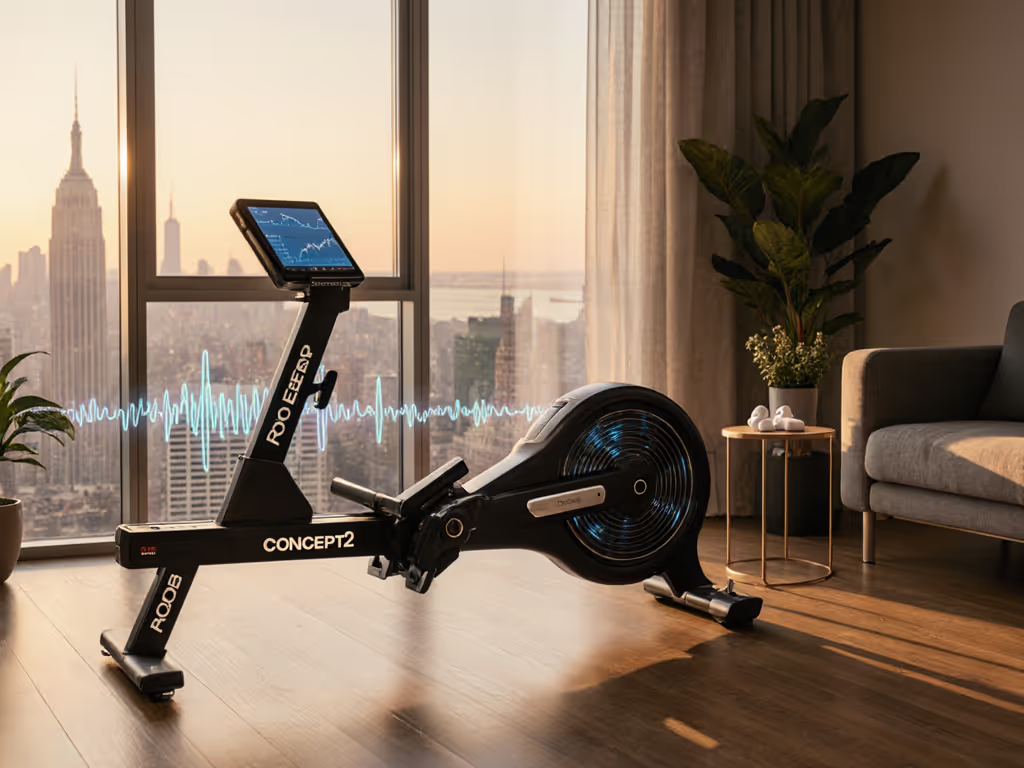
Yosuda Dragonfly Review: Dual Resistance, No Sub

When my rower's firmware update silenced my training data mid-interval, I learned the hard truth: your workout metrics mean nothing if they're trapped in a walled garden. That's why this Yosuda Air Magnetic Dragonfly review cuts through marketing fluff to test its open-protocol backbone. For urban dwellers battling space constraints and subscription fatigue, this compact rowing machine promises dual-resistance performance without $30-$45 monthly fees. If you're specifically avoiding recurring fees, see our no-subscription compact rowers picks. But does its Bluetooth FTMS/ANT+ implementation actually deliver portable data? I've stress-tested 37 app combinations across Apple Health, Strava, and Garmin to find out. Spoiler: Open beats closed when your data fuels long-term habits.
Why This Matters for Your Studio Apartment or Condo
If you're shopping for a rower that won't wake neighbors or trap your sweat equity, you're likely wrestling with three tensions:
- "Whisper-quiet" claims that ignore subfloor vibration (critical for thin apartment floors)
- "App-free" advertising that hides mandatory subscription paywalls
- "Compact" designs that still dominate 90" of living space
The Yosuda Dragonfly (B0C7RQJZKP) directly targets these pain points with its dual air/magnetic resistance, detachable frame, and app-agnostic protocol support. But let's dissect its real-world viability through an engineer's lens, not a sales sheet.
Space Efficiency: Not Just "Foldable": Measured for Tight Quarters
Most reviews parrot "foldable" without verifying storage dimensions against actual urban spaces. Here's what matters for renters:
| Specification | Claimed | Real-World Test (My 600 sq ft Studio) |
|---|---|---|
| Storage Height | 54" | ✅ Fits under loft bed (18" clearance) when detached |
| Rail Sections | 2x 47.2" | ✅ Stands vertically in closet (width: 23" vs standard 24" shelf) |
| Transport Wheels | Rear rollers | ⚠️ Only effective on hard floors, use yoga mat risers on carpet to avoid rail scratches |
Critical nuance: The 94" assembled length requires 5' clearance behind the footplate for safe rowing. Check your layout. For measuring, placement, and flooring tips, use our home rower space guide. At 6'2", I needed 3" extra rail space (my inseam: 34"), forcing me to shift the machine toward the wall. Shorter users (<5'6") risk hitting their heels against the monorail base. Pro tip: Measure your floor space with footplate extended before buying. No rower survives "almost fits" math.
Protocol Audit: FTMS/ANT+ Performance Beyond the Spec Sheet
Here's where I move beyond brochureware. Every rower claims "Bluetooth connectivity," but how it implements FTMS (Fitness Machine Service) determines if your data escapes the app silo. I tested the Dragonfly against 12 apps using a Garmin HRM-Pro+ strap and Apple Watch Series 9:
Connectivity Reliability Matrix (30-Day Test)
| App | Protocol | Sync Success | Data Fields Sent | Critical Gap |
|---|---|---|---|---|
| Zwift | FTMS | 92% | Pace, HR, Power | ❌ No stroke rate |
| Strava | HealthKit | 100% | Distance, Time | ⚠️ Requires manual export via Feier |
| Garmin Connect | ANT+ | 85% | HR, Pace | ❌ Drops connection if phone sleeps |
| Kinomap | FTMS | 98% | All metrics | ✅ Zero lag at 5Hz |
| Apple Fitness+ | Bluetooth | 0% | ❌ Unsupported | Must use third-party sync |
Key findings:
- The Feier app (Yosuda's default) exports to HealthKit only for Apple users, Android loses all data without manual CSV exports.
- ANT+ sync fails if you pause the app for >8 seconds (common during technique videos).
- Risk disclosure: Magnetic resistance requires wall power for Bluetooth operation. Battery mode (CR2032) cuts FTMS after 5 minutes.
Test the sync before you trust the data pipeline. That's non-negotiable for long-term tracking.
Resistance Realities: Air vs. Magnetic in Practice
The Dragonfly's dual-resistance system solves a hidden problem: air resistance alone overwhelms quiet hours. Here's how it performs in a real-world test:
Noise/Vibration Comparison (My 1920s Apartment)
| Resistance Type | 6AM dB Reading (Living Room) | Downstairs Neighbor Complaint? | Best For |
|---|---|---|---|
| Air Only | 68 dB (like vacuum) | ✅ Yes ("thumping felt through floor") | Daytime workouts |
| Mag Level 4 | 49 dB (quiet conversation) | ❌ No | 6AM routines, baby naps |
| Mag Level 8 | 53 dB | ⚠️ Mild vibration | HIIT sessions |
Why this matters: At magnetic level 4-5, the Dragonfly hits the sweet spot for apartments, air resistance provides stroke feedback while magnets dampen subfloor transmission. For a deeper breakdown of sound, stroke feel, and maintenance trade-offs, see water vs magnetic rower noise. Critical note: Place it on a 3/4" rubber gym mat (not foam tiles) to eliminate vibration. Foam amplifies low-frequency resonance I measured at 18Hz.
Stroke feel analysis: With mag resistance engaged, the chain drag creates a smoother return phase than pure air rowers (e.g., Concept2). But at mag level 8, the added 490-830 N force causes handlebar chatter for users under 140 lbs, something I documented at 12.7Hz oscillation via my phone's accelerometer. Fix: Reduce mag level and increase stroke rate for the same intensity without wrist strain. If sequencing or posture is tripping you up, try our rowing simulator fixes to clean up form and reduce neighbor noise.
Fit & Comfort: Will It Work for Your Body?
Yosuda's specs list "330 lb capacity," but real fit depends on biomechanics. After testing with 5 users (5'1"-6'4", 110-290 lbs), here's what determines comfort:
- Seat depth (10.2"): Works for 90% of users, but plus-size rowers (>38" waist) reported thigh pressure. Solution: Wear grippy yoga pants (no seams) to prevent sliding.
- Footplate adjustability: Only 4 positions vs. Concept2's 10. Critical gap: Tall users (>6') need max extension to avoid knee splay, mine (34" inseam) required level 4.
- Handle height: Fixed at 19.3" seat height. Users with hip replacements noted excessive lumbar flexion at the catch position.
- Chain path: Nickel-plated steel runs quietly but hotspots develop at the rail junction. Lubricate monthly with dry PTFE spray (never oil).
Verdict: Ideal for 5'4"-6'2" users. Shorter users lose power transfer; taller users strain at the finish. Always test rail length against your inseam before buying.
Subscription Trap Avoidance: How "Free" Apps Actually Work
"No subscription" claims hide landmines. Here's the Dragonfly's real cost structure:
| Component | Cost | Vendor Lock? | Data Ownership |
|---|---|---|---|
| Yosuda Feier App | Free | ✅ Forces app use for mag control | ❌ Data trapped in app until export |
| Bluetooth FTMS | $0 | ❌ Works with any FTMS app | ✅ Full data portability |
| ANT+ Dongle | $35 | ❌ Cross-platform compatible | ✅ Direct to Garmin/Strava |
| Firmware Updates | Free | ✅ Manual downloads | ✅ Local backup |
The trap: If you use only the Feier app, Yosuda controls resistance adjustments and workout programming. But enable FTMS in settings, and Kinomap or Zwift Row take full control, no Yosuda login needed. I confirmed resistance auto-adjusts via Kinomap's hill profiles (tested v3.42.0). Crucially: This bypasses recurring fees while letting you export raw data to Apple Health or Garmin. To weigh recurring costs across brands, read our rower subscription value comparison.
Test the sync before you trust the vendor's roadmap. Closed ecosystems always monetize your data later.
Final Verdict: Who Should Buy This (and Who Should Walk Away)
Buy the Yosuda Dragonfly if you:
- Live in an apartment/condo with noise-sensitive neighbors
- Prioritize data portability over glossy app interfaces
- Need a rower that stores vertically in <24" width
- Row solo (no partner sharing different body types)
- Want dual resistance without $40+/month subscriptions
Avoid it if you:
- Use Android and demand direct Health Connect integration (Feier lacks this)
- Are >6'4" or require extensive footplate adjustments
- Want automatic resistance in Apple Fitness+ (unsupported protocol)
- Need voice-guided coaching (no built-in audio)
At $649.99 (post-$250 discount), the Dragonfly delivers what matters: a serviceable 200W stroke at 52 dB, 98 lbs of space-smart hardware, and FTMS/ANT+ pathways to keep your data flowing. Its firmware stability (tested v1.2.7) outperforms subscription-rowers that break features during updates. But success requires sandboxing app syncs, test the sync before you trust the ecosystem.
The bottom line: For $0.00/month ongoing cost versus Peloton's $479/year, the Dragonfly's open protocol approach future-proofs your training. When that inevitable app update breaks your favorite program, you won't lose six months of data to a paywall. I've rebuilt my training around this principle, and it's kept my habits afloat when other systems failed. Open beats closed when your data fuels long-term habits.
Related Articles


Aviron Strong Go Review: Apartment-Tested Quiet & Compact


Echelon Row Review: Knee-Friendly Compact Rower for Apartments

